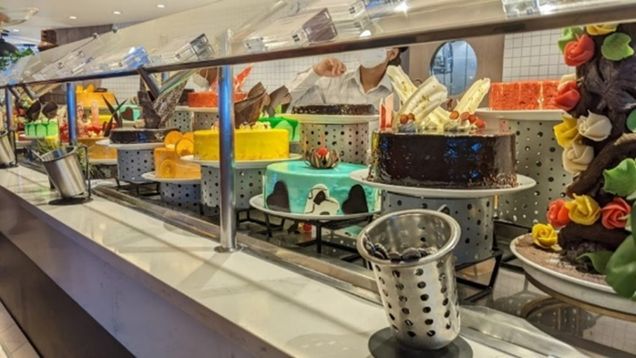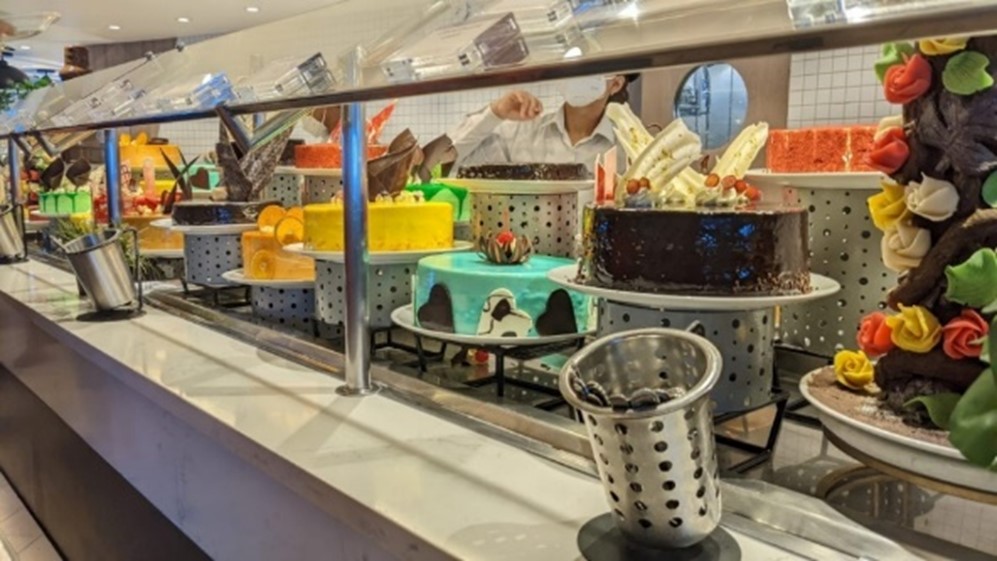Student Work Wednesday- Featuring Nick Lucovich
This week we’re highlighting the work of Gastronomy student Nick Lucovich. Nick completed this project on food waste in the cruise ship sector for the Food Waste course taught by Steven Finn here at Boston University’s Metropolitan College.
A little about the author:
Born and raised in Pittsburgh, PA, Nick Lucovich has a passion for food deeply rooted beyond the local fare of pierogies and Primanti Brothers sandwiches. Frequent visits to the mushroom farm, where 3 generations of his family worked, ignited his interest for agriculture & food. He spent his teenage summers maintaining the grounds and hand packaging mushrooms. After earning a bachelor’s degree in Food Science from Michigan State University, Nick started his career at Giant Eagle gaining experience in food service and retail with roles in sensory evaluation, quality, food safety, merchandising, and procurement. Nick joined Nestlé in 2013 and is currently a product developer within their Baking Division, responsible for leading innovation, renovation and optimization projects from idea to commercialization. He loves the science of prototyping and scaling recipes to large manufacturing proportions that ultimately lead to new or improved products in the market.
Cruising Ahead with Less Food Waste

Photo by Royal Caribbean: Icon of the Seas, 2022
Touted as the largest cruise ship in the world, Royal Caribbean’s Icon of the Seas, capable of hosting up to 7,400 passengers is scheduled to set sail in January 2024 and features more than 40 restaurant concepts1, confirming that food is central to the cruise industry’s business model and a major part of the gastronomic experience for cruise passengers. According to Cruise Market Watch, there were 323 cruise ships total worldwide at the end of 2021, with a total passenger capacity of 581,2002. A large cruise ship requires a massive amount of food to feed the crew and guests daily, and unfortunately in the process, generates a significant amount of food waste.
More than one-third of all food produced globally is either lost or wasted each year3. This has far-reaching economic, environmental, and social impacts beyond just the tourism industry. Wasted food amounts to over 1-billion tons and nearly $1 trillion in global economic losses annually4. Resources used throughout the production, transportation, and distribution of food are also wasted, straining the environment with greenhouse gas emissions, degradation of soil health, and loss of biodiversity5. Saving just fifty percent of the food lost or wasted each year could end food insecurity worldwide5.
So how much food waste does a cruise ship typically generate? Unfortunately, food waste data for cruise ships is not widely published, but it’s estimated that as much as 30% of food loaded on a cruise ship daily goes to waste6. Of the food wastes sources, overproduction (50%) and plate leftovers (18%) represent the highest potential for savings, with production waste (trimming, etc.) and storage/expiration date losses accounting for the remainder7.
Most ships feature a variety of restaurants and dining options that are often included in the price of the cruise fare. Pre-paying for food allows travelers to relax from the worries of spending money on the ship. However, this all-inclusive model often leads to an atmosphere of food surplus and food waste. Travelers may feel the urge to take excess food from the buffet or order an extra dessert to achieve a sense of satisfaction with getting their money’s worth, but ultimately failing to finish their plate. Reducing food waste doesn’t need to take away from the gastronomic experience, but everyone has a responsibility to do the right thing for our planet. Cruise lines can display less food in dining halls, use smaller plates, and display signage to inform guests on the benefits of preventing food waste, which can improve their bottom line through savings on purchasing and disposal costs.

Prevention of food waste is by far the best option, but proper management of waste to avoid disposal in landfills or unprocessed discharge at sea is crucial for environmental sustainability as well. Cruise ships should aim to donate edible surplus at ports or compost food waste while avoiding emission-heavy incineration methods as well as bulk disposal of food waste at ports, destined for landfills. The International Convention for the Prevention of Pollution from Ship (MARPOL) permits discharge of unprocessed food waste into the sea outside of 12 nautical miles from the coast or 3 miles if it’s been ground, but fortunately corporations are taking initiative to reduce their environmental impact in effort to reverse a long history of environmental and health problems8,9,10. In 2022, Carnival Cruise Line became the first major cruise line to install bio-digesters fleetwide, capable of digesting 99 percent of the food put into them11.
The cruise industry has rebounded from the devastating impact of the covid-19 pandemic which drove passenger volume down 80% worldwide and has resumed its decades long trend as one of the fastest growing segments of tourism12. Passenger volume is expected to surpass pre-pandemic levels in 2023 and grow beyond 12% by the end of 2026, driving economic growth and job creation for the cruise industry, destinations, and developing countries13. The opportunity is now to ride this growth trend on a course toward reducing food waste to achieve target 12.3 within the United Nations’ Sustainable Development Goals (SDG’s), which aims to halve per capita global food waste by 203014.
REFERENCES
- “The World’s Largest Cruise Ship Will Set Sail In 2024.”October 20,2022. https://www.forbes.com/sites/michellegross/2022/10/20/the-worlds-largest-cruise-ship-will-set-sail-in-2024/?sh=7430085616e5
- Cruise Market Watch. “2021 Worldwide Cruise Line Passenger Capacity” https://cruisemarketwatch.com/capacity/
- “Food Wastage Footprint – Impacts on Natural Resources (Summary Report).” 2013. http://www.fao.org/3/i3347e/i3347e.pdf
- “Reflect, Rethink, Reconsider: Why Food Waste is Everybody’s Problem.” https://www.capgemini.com/insights/research-library/food-waste/
- US EPA. “From Farm to Kitchen: The Environmental Impacts of U.S. Food Waste.” Nov 30, 2021: https://www.epa.gov/system/files/documents/2021-11/from-farm-to-kitchen-the-environmental-impacts-of-u.s.-food-waste_508-tagged.pdf
- Research Features. ”Quantifying food waste on cruise ships: Experiences from China” April 15, 2021.https://researchfeatures.com/quantifying-food-waste-cruise-ships-experiences-china/
- “Reduction of Food Waste on Cruise Ships: A project report & implementation guide.” 2019.
- Power knot. “Cruise Ships Set Sail with Power Knot Biodigesters on Board.” June 15, 2021. https://powerknot.com/2021/06/15/cruise-ships-set-sail-with-power-knot-biodigesters-on-board/
- “Cruise industry faces choppy seas as it tries to clean up its act on climate.” July 27, 2022 https://www.reuters.com/business/sustainable-business/cruise-industry-faces-choppy-seas-it-tries-clean-up-its-act-climate-2022-07-27/
- “Cruise Ship Pollution is Causing Serious Health and Environmental Problems.” April 26, 2019. https://www.forbes.com/sites/jamesellsmoor/2019/04/26/cruise-ship-pollution-is-causing-serious-health-and-environmental-problems/?sh=2ffa388437db
- “Carnival Cruise Line Significantly Reducing Food Waste As First Major Cruise Line to Employ Bio-Digesters Fleetwide.” April 22, 2022. https://carnival-news.com/2022/04/22/carnival-cruise-line-significantly-reducing-food-waste-as-first-major-cruise-line-to-employ-bio-digesters-fleetwide/
- Cruise Line International Association: 2022 State of the Industry Report State Of The Cruise Industry Outlook 2022 | CLIA (cruising.org)
- United Nations. “The 17 Goals.” https://sdgs.un.org/goals
